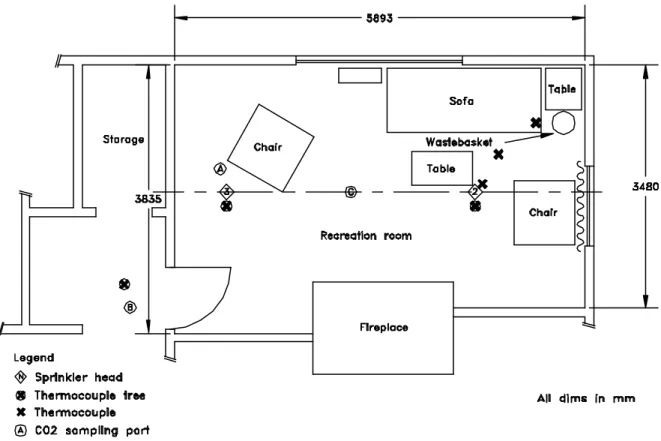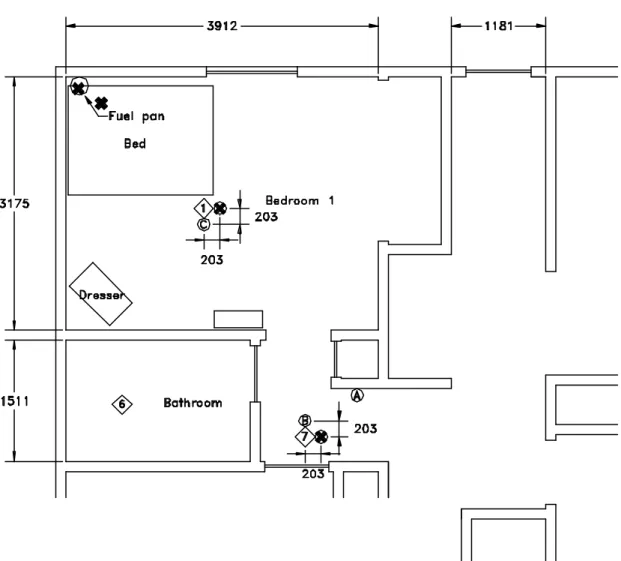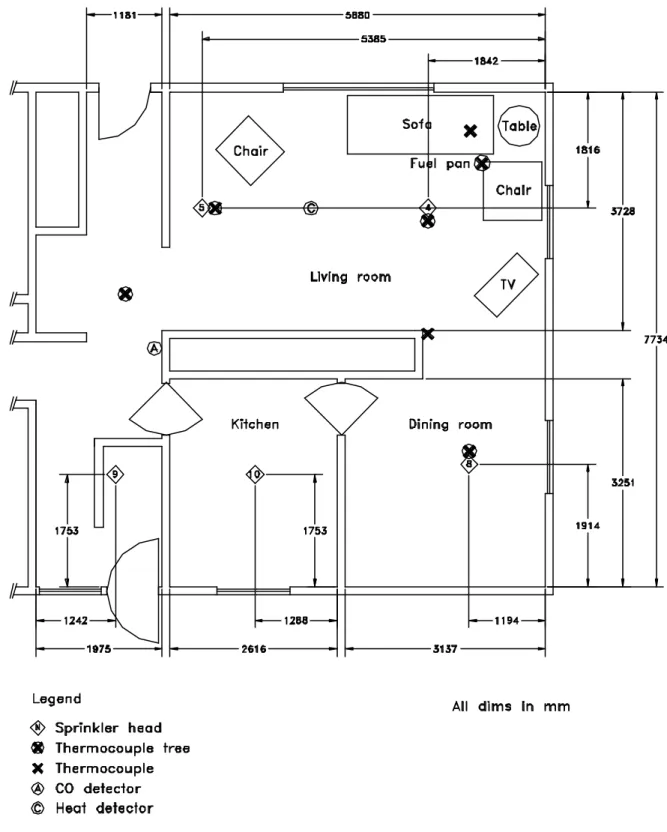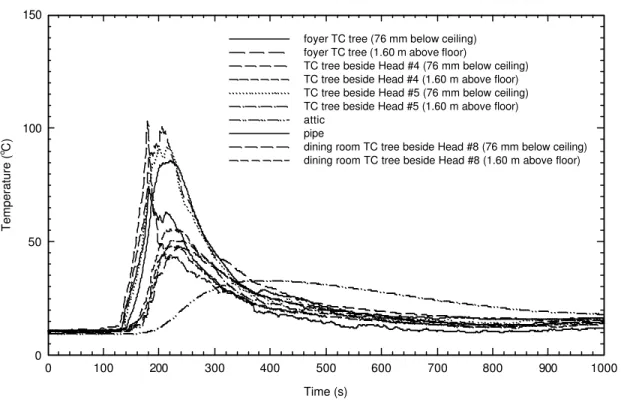READ THESE TERMS AND CONDITIONS CAREFULLY BEFORE USING THIS WEBSITE.
https://nrc-publications.canada.ca/eng/copyright
Vous avez des questions? Nous pouvons vous aider. Pour communiquer directement avec un auteur, consultez la
première page de la revue dans laquelle son article a été publié afin de trouver ses coordonnées. Si vous n’arrivez pas à les repérer, communiquez avec nous à PublicationsArchive-ArchivesPublications@nrc-cnrc.gc.ca.
Questions? Contact the NRC Publications Archive team at
PublicationsArchive-ArchivesPublications@nrc-cnrc.gc.ca. If you wish to email the authors directly, please see the first page of the publication for their contact information.
NRC Publications Archive
Archives des publications du CNRC
This publication could be one of several versions: author’s original, accepted manuscript or the publisher’s version. / La version de cette publication peut être l’une des suivantes : la version prépublication de l’auteur, la version acceptée du manuscrit ou la version de l’éditeur.
Access and use of this website and the material on it are subject to the Terms and Conditions set forth at
Fire detection and suppression studies at Kemano Village
Su, J. Z.; Crampton, G. P.; Carpenter, D. W.; McCartney, C. J.; Leroux, P.
https://publications-cnrc.canada.ca/fra/droits
L’accès à ce site Web et l’utilisation de son contenu sont assujettis aux conditions présentées dans le site LISEZ CES CONDITIONS ATTENTIVEMENT AVANT D’UTILISER CE SITE WEB.
NRC Publications Record / Notice d'Archives des publications de CNRC: https://nrc-publications.canada.ca/eng/view/object/?id=e57fa7ec-bb6a-461c-a137-1bce5eea83ee https://publications-cnrc.canada.ca/fra/voir/objet/?id=e57fa7ec-bb6a-461c-a137-1bce5eea83ee
Fire detection and suppression studies at Kemano
Village
Su, J.Z.; Crampton, G.P.; Carpenter, D.W.;
McCartney, C.; Leroux, P.
A version of this paper is published in / Une version de ce document se trouve dans:
The Sixth Fire Suppression & Detection Research Application Symposium, Tampa, Fl., Jan. 23-25, 2002, pp. 1-12
www.nrc.ca/irc/ircpubs
FIRE DETECTION AND SUPPRESSION STUDIES AT KEMANO VILLAGE The Sixth Fire Suppression & Detection Research Application Symposium
Tampa, FL, 23-25 January 2002
Joseph Z. Su*, George P. Crampton, Don W. Carpenter, Cameron McCartney, Patrice Leroux
Fire Risk Management Program
Institute for Research in Construction
National Research Council of Canada
Ottawa, Canada K1A 0R6
1.0 INTRODUCTION
Kemano, British Columbia, was a company town built 50 years ago by Alcan Smelters and Chemicals Ltd. to support its hydroelectric station. When the station became essentially automated, making the town obsolete, an idea was born. The deserted town was donated to British Columbia's fire services for training and research, which has been known as the Kemano Public Safety Initiative (KPSI).
In addition to becoming a proving ground for firefighting, abandoned houses filled with donated furniture and props made an ideal, full-scale experimental site. Using this unique opportunity, the National Research Council of Canada (NRC) completed two series of fire experiments at the Kemano Village: one to study the response of smoke detectors in houses, and the other to evaluate the performance of a cross-linked-polyethylene (PEX-a) pipe sprinkler system.
The sprinkler project is now complete and the results of the experiments are presented in this paper. NRC researchers are still analyzing the experimental data produced from the smoke detector tests. This paper includes an overview of the smoke detector project.
2.0 PEX-A PIPE SPRINKLER SYSTEM TESTING
A wood-framed bi-level house (approximately 1000 square feet per floor, 2000 square feet total) was used for fire experiments. A sprinkler system with 11 sprinkler heads and 2 plumbing fixtures was designed and installed by Wirsbo for fire experiments in accordance with NFPA 13D [1]. The system covered the entire ground floor and a basement recreation room of the test house with quick response sprinkler heads (with a temperature rating of 68.3°C or 155°F). Each sprinkler head was screwed onto a multi-port fitting with connections to 4 water pipe lines. The cross-linked-polyethylene pipes (with a diameter of 12.7 mm) were rated for 1103 kPa (160 psi) at 23°C (73.4°F), and 552 kPa (80 psi) at 93°C (200°F). Designed flow rate was 50 L/min for the hydraulically remotest sprinkler head and 55 L/min for the hydraulically nearest sprinkler head. The system was under a static pressure of 552 kPa (80 psi); during sprinkler activation, the main manifold was under a flowing pressure of 241 kPa (35 psi).
* Author to whom correspondence should be addressed (Phone: 613-993-9616, Fax: 613-954-0483, E-mail: joseph.su@nrc.ca).
NRC conducted 2 experiments with fire origin in the basement recreation room,
1 experiment with fire origin in the ground floor bedroom and 1 experiment with fire origin in the living room, using fuels typically found in an occupied residence. Smoke detectors, carbon monoxide detectors and heat detectors were installed in the experimental house. Measurement included temperatures in the fire room and egress route, CO and CO2 concentrations, activation times of sprinklers and smoke, heat and CO detectors, and video records of smoke movement.
2.1 Sprinkler Test 1
The first experiment was conducted in the recreation room (5.9 m long, 3.8 m wide and 2.3 m high). The recreation room had an additional 0.25 m height of cavity with open wood joists. Two sprinkler heads were spaced at 3.55 m apart and the designed flow rate was 54.9 L/min for each of the 2 sprinkler heads. The plastic pipes and fittings were installed, without protection, on the open wood joists at the height of the furring. Figure 1 is a schematic drawing of the recreation room and experiment set-up.
The ignition source was a wastebasket beside a wooden end table in one corner and between a sofa and a chair with a long curtain behind. The wastebasket was filled with newspaper that touched the curtain. Because the furniture was very damp, a small amount of diesel (100 ml) was dripped onto the sofa arm for ease of ignition. The fire was started by igniting the newspaper in the wastebasket. The door of the recreation room was then closed.
About 1 and half minutes after the ignition, the flame developed to more than 1 m high, involving the sofa, end table and drape and the smoke layer reached the eye level. A heat detector, rated at 57°C (135°F) and temperature rise of 8.4°C/min (15°F/min) and installed at the centre of the room, was actuated by the rate of temperature rise 104 s after the ignition. The nearby ceiling temperature was below 57°C at that time. One sprinkler head (#2) was actuated 114 s after the ignition. Within 26 seconds, the water spray from this single sprinkler head controlled the fire and confined the fire to the space under the end table. The flame became obscured 91 seconds after sprinkler activation due to loss of visibility from smoke build-up.
Figure 2 shows that the sprinkler quickly controlled the fire and that the room was cooled down to below 20°C during the water spray. The plastic pipe surface temperature at the position closest to the fire was below 50°C during the test. The exposed pipes and fittings had no visible damage during this experiment. The CO concentration inside the room was 100 ppm at the beginning of the water spray and 500 ppm at the end of the water spray.
Temperatures in the hallway outside the recreation room were basically not affected by the fire inside the room. An ionisation-photoelectric smoke detector in the hallway actuated 4 s later than the sprinkler, due to the fact that this smoke detector was located outside of the fire room whose door was closed.
After the water supply was shut off, firefighters were sent into the recreation room to manually extinguish the fire hidden underneath the end table and to ventilate the room. Fire damage was limited to the sofa, the end table and the drape. The walls and open wood joists of the recreation room had soot deposition but no major damage.
Figure 1. Sprinkler test in the recreation room (Test 1). Time (s) 0 100 200 300 400 500 Temperature ( oC) 0 50 100 150 200
TC tree beside Head #3 (2.23 m above floor) TC tree beside Head #3 (1.60 m above floor) TC tree beside Head #2 (2.23 m above floor) TC tree beside Head #2 (1.60 m above floor) open joist cavity
pipe surface
hallway TC tree (2.23 m above floor) hallway TC tree (1.60 m above floor)
2.2 Sprinkler Test 2
The second experiment was also conducted in the recreation room. Figure 3 shows the set-up for the second experiment. A reclining chair was placed midway between the 2
sprinklers and used as the fire source. The chair was located directly underneath the exposed pipes. A cloth was hung on an arm of the chair and reached down to a small fuel pan placed beside and under the chair. A small amount of diesel (150 ml) was dripped onto the arm and the cloth and into the fuel pan for ease of ignition. This arm was at an equal distance to both sprinkler heads. The fire was started by igniting the cloth hung on the chair. The door of the recreation room was then closed.
Within 44 s, the flame developed to about 1.3 m high, involving the top and lower part of the arm side. The heat detector actuated 52 s after the ignition, by the rate of temperature rise. Within 54 s from the ignition, the flame involved the entire arm side and further developed to the back of the recliner. A minute later, the flame gradually slowed down and became smaller. As shown in Figure 4, the temperatures inside the room started to drop 105 s after the ignition. The fire on the chair changed to mostly smouldering mode with heavy smoke accumulation in the room. The room temperatures lowered to around 30oC within 330 s after the ignition. At that time, the visibility in the room was completely lost and only a twinkling flame from the chair was visible on the video.
Afterwards, the fire was slowly built up again for another 7 minutes as indicated by the rising temperature profiles shown in Figure 4. The peak temperatures finally reached 178oC in the open joist space and 140oC on the plastic pipe right above the chair. One sprinkler head (#2) actuated 740 s after the ignition. This single sprinkler head (#2) controlled and contained the fire. Fire was quickly knocked down within 1 minute of the sprinkler activation.
During the experiment, the plastic pipes and fittings were exposed twice to the
temperature of above 93°C, the first for 40 s and the second for 100 s, with the peak exposure of 140oC. It was observed after this test that the exposed pipes and fittings were not visibly damaged. The same pipes and fittings continued to be used in the subsequent experiment. The CO concentration was 1000 ppm in the recreation room when the sprinkler was actuated. The maximum CO concentration was 1800 ppm at the end of 10-minute sprinkler spray.
The temperatures in the hallway were basically unchanged. Since the door to the recreation room was closed, the hallway temperatures were around 10°C, close to the ambient temperature.
After the sprinkler sprayed for a total of 10 minutes, the water supply to the sprinkler was shut off and firefighters were sent into the room. The firefighters vented the room and manually extinguished the fire that was still smouldering inside the back cushion.
Figure 3. Sprinkler test in the recreation room (Test 2). Time (s) 0 200 400 600 800 1000 1200 1400 1600 1800 2000 Temperature ( o C) 0 50 100 150 200
TC tree beside Head #3 (2.23 m above floor) TC tree beside Head #3 (1.60 m above floor) TC tree beside Head #2 (2.23 m above floor) TC tree beside Head #2 (1.60 m above floor) open joist above fire
pipe above fire
hallway TC tree (2.23 m above floor) hallway TC tree (1.60 m above floor)
2.3 Sprinkler Test 3
The third experiment was conducted in a bedroom (#1) on the ground floor. Figure 5 shows the set-up for the third experiment. The bedroom was 3.94 m long, 3.20 m wide and 2.44 m high with one sprinkler head (#1) inside the bedroom. The designed flow rate was 54.9 L/min for this sprinkler head. The bedroom door was kept open during the experiment.
A queen size bed was placed 0.15 m from a wall. A small fuel pan was placed under the bed, with the bedspread touching the pan. A small amount of diesel (150 ml) was poured into the pan as an ignition source. The fire was started by igniting the diesel in the fuel pan. Within 1 minute, the fire was fully developed to 1.5 m high in the bedroom corner and light smoke moved to the corridor.
A photoelectric smoke detector in the corridor actuated 45 s after the ignition. At that time, the smoke layer was still close to the ceiling and the visibility in both the bedroom and the corridor were still very good.
A heat detector inside the bedroom actuated 57 s after the ignition. The heat detector was actuated by the rate of temperature rise since the bedroom ceiling temperature was only 45oC at that time. Smoke was seen to move to the foyer ceiling at the same time. About 71 s after the ignition, the smoke layer dropped to eye level in the corridor and the foyer visibility was still acceptable for evacuation purposes.
Figure 6 shows temperature profiles at various locations during the experiment. The sprinkler head (#1) inside the bedroom actuated 84 s after the ignition. This single sprinkler head controlled and contained the fire under the bed in 1 minute. A few seconds later, visibility was lost in the bedroom and the nearby corridor. Temperatures measured by a thermocouple installed in the attic space (6 mm inside the drywall ceiling) right above the fire, were 54oC at the maximum.
A carbon monoxide detector, which was installed in the corridor at a 0.30 m height, indicated that CO concentration in the corridor was less than 13 ppm when the sprinkler
actuated. The CO detector was actuated 7.5 minutes after the sprinkler activation when the CO concentration in the corridor reached 600 ppm.
The water supply to the sprinkler was shut off 10 minutes after the sprinkler activation. Firefighters entered the house, opened the bedroom window and used a fire hose to spray water onto the bed.
Since the sprinkler contained the fire under the bed, the top of the bed was not burnt. The major damage was underneath the bed (the box and the underside of the mattress). It should be noted that, after the experiment, the mattress and the box continued to smoulder. Smoke was seen to arise in the bedroom corner underneath the bed. Firefighters were called in again to extinguish the smouldering fire inside the mattress and box and to remove them from the house.
An unexpected phenomenon was observed for the smoke detector during this experiment. Approximately one minute after the smoke detector activation, the audio alarm changed from a pulsed beep to a continuous sound. This continuous sound lasted for
2.4 Sprinkler Test 4
The fourth experiment was conducted in the living room. The living room was 7.19 m long, 3.73 m wide and 2.44 m high, connecting to the dining room of 4.00 m long and 3.14 m wide without partition. Figure 7 shows a schematic of the set-up for the fourth experiment.
Furniture in the living room included a TV set, a leather chair, a wooden end table and a sofa with a curtain behind. A cloth was hung on the chair and on the sofa, reaching down to a fuel pan placed in between. A small amount of diesel (125 ml) was dripped onto the cloth and the pan for ease of ignition.
A heat detector, which was installed midway between the 2 sprinkler heads in the living room, actuated 39 s after the ignition by the rate of temperature rise. An upper smoke layer of half-meter thickness was formed in the living room within 50 s from the ignition.
A single sprinkler head (#4) actuated 59 s after the ignition and it controlled and contained the fire (the designed flow rate was 53.4 L/min for this sprinkler head). Thirty seconds after the sprinkler activation, the smoke layer quickly dropped and the living room became completely dark with no visibility. The foyer also lost visibility 56 s after the sprinkler activation. A CO detector in the foyer (at a 0.30 m height) indicated that the CO concentration
Time (s) 0 100 200 300 400 500 600 700 800 900 1000 Temperature ( o C) 0 50 100 150
bedroom TC tree beside Head #1 (76 mm below ceiling) bedroom TC tree beside Head #1 (1.60 m above floor) attic
corridor TC tree beside Head #7 (76 mm below ceiling) corridor TC tree beside Head #7 (1.60 m above floor)
Figure 8 shows temperature profiles at various locations during the experiment. A vertical run of the plastic pipe from the attic space to the basement was exposed in the living room and was exposed to a maximum temperature of 74oC during the fire experiment, not exceeding its rated temperature yet. The maximum temperature in the attic space, measured by a thermocouple inside the gypsum board ceiling (6 mm inside) right above the fire, was 33oC, indicating no structural damage [2].
The water supply to the sprinkler was shut off 10 minutes after the sprinkler activation. When firefighters were sent into the house, they found no flaming fire remaining in the living room. Since the sprinkler successfully contained the fire in the room corner, the fire damage was limited to one arm of each sofa and chair.
3.0 SMOKE DETECTOR RESPONSE TESTING
NRC conducted fire experiments of smoke detector response in a 1-storey dwelling and a 2-storey dwelling at Kemano. Both dwellings employed typical wood-frame construction and internal surfaces were of common construction materials. Smoke detectors were installed at various locations (including code-required locations) in order to study the effect of type, number, location and orientation (ceiling, corner, wall at different heights) of installed smoke detectors on their response. Time (s) 0 100 200 300 400 500 600 700 800 900 1000 Temperature ( o C) 0 50 100 150
foyer TC tree (76 mm below ceiling) foyer TC tree (1.60 m above floor)
TC tree beside Head #4 (76 mm below ceiling) TC tree beside Head #4 (1.60 m above floor) TC tree beside Head #5 (76 mm below ceiling) TC tree beside Head #5 (1.60 m above floor) attic
pipe
dining room TC tree beside Head #8 (76 mm below ceiling) dining room TC tree beside Head #8 (1.60 m above floor)
The 1-storey dwelling had 2 bedrooms, a bathroom, a kitchen, a living and dining room on the ground floor (approximately 900 square feet for the ground floor). A total of 35 detectors were installed on the ground floor, including 14 photoelectric smoke detectors, 14 ionization smoke detectors, 5 combined (ionization-photoelectric) smoke detectors, and 2 carbon monoxide detectors.
The 2-storey dwelling had 3 bedrooms and a bathroom on the second floor, a living room, a dining room and a kitchen on the ground floor (approximately 1400 square feet total). A total of 20 detectors were installed on the ground and second floors, including 5 photoelectric smoke detectors, 8 ionization smoke detectors, 5 combined (ionization-photoelectric) smoke detectors, and 2 carbon monoxide detectors.
Audibility tests and 13 fire experiments were conducted in these houses. Fire scenarios included flaming fires and smouldering fires of wood, paper, polyurethane foam, cotton flannel, upholstered furniture and cooking oil, with fire origin in the bedroom, living room or kitchen. All windows were closed during each experiment.
Experimental data obtained from this project includes optical densities of smoke at various locations, response times of all detectors, temperatures in the fire compartment and egress route, concentrations of carbon monoxide and carbon dioxide, and video records. NRC is still analyzing this data to determine the impacts of type, number, location and orientation of smoke detectors on occupant warning time.
4.0 CONCLUSIONS
NRC completed a series of fire experiments of a cross-linked-polyethylene pipe sprinkler system in a residential dwelling at the Kemano Village. This residential sprinkler system was designed to prevent flashover within the compartment of fire origin and to allow response time for the fire department. In all 4 experiments, a single sprinkler head controlled and contained the fire within the fire origin within 1 minute of the sprinkler activation. The sprinkler water spray cooled down the fire compartment, allowing safe evacuation of occupants and deployment of firefighting personnel. Since the sprinkler successfully controlled the fire in each experiment, the fire damage was limited to the furniture that was near the ignition source. The walls, open wood joists or ceiling of the fire room had soot deposition but no major damage.
The unprotected cross-linked-polyethylene pipes and fittings were exposed to the temperature of as high as 140oC in the recreation room with open wood joists. After the exposure of temperatures above the rated temperature of 93°C at 552 kPa for 140 s, the pipes and fittings were not visibly damaged, the sprinkler system was successfully actuated to control the fire. Technical data obtained from the Kemano experiments can guide further studies with an increased fire challenge to the sprinkler systems.
The effectiveness of heat, smoke and carbon monoxide detectors was also investigated in the sprinkler experiments. As expected, the heat detector was always actuated earlier than the sprinkler. The rate of temperature rise triggered the heat detector. The smoke detector, installed on the egress route, was actuated before the sprinkler activation when the fire room was open to the egress route; it was actuated after the sprinkler activation when the fire room door was closed. During one experiment, the activated photoelectric smoke detector stopped sounding unexpectedly. This phenomenon needs further investigation.
NRC also completed a series of fire experiments on smoke detector response in residential dwellings at the Kemano Village. The smoke detector project has produced experimental data that can be used to analyze the impacts of type, number, location and orientation of smoke detectors on occupant warning time. NRC is still analyzing the test data and will publish the results when this analysis is complete.
5.0 ACKNOWLEDGEMENTS
These studies were conducted by the National Research Council of Canada with the financial support of Underwriters' Laboratories of Canada for the smoke detector project and Wirsbo Canada Ltd. for the sprinkler project. NRC also acknowledges the logistic support from the B.C. Office of the Fire Commissioner and Alcan Smelters and Chemicals Ltd.
6.0 REFERENCES
1. NFPA 13D, "Standard for the Installation of Sprinkler Systems in One- and Two-Family Dwellings and Manufactured Homes," National Fire Protection Association, Quincy, MA, U.S.A., 1999 Edition, pp. 1-29.
2. UL 1626, "Residential Sprinklers for Fire-Protection Service", Underwriters Laboratories, Northbrook, IL, U.S.A., 1994, 2nd ed., Section 26.1.1 (d).





